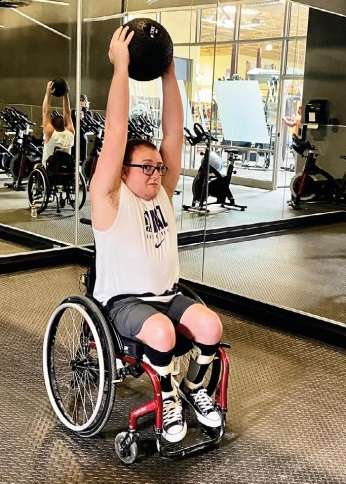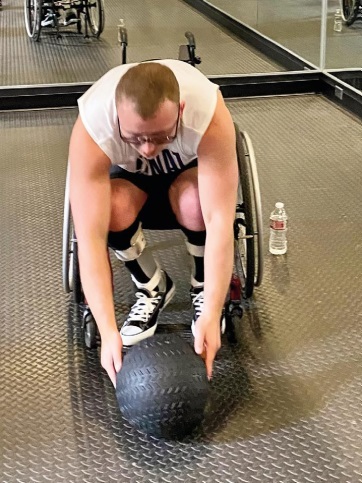ON YOUR WAY TO BETTER HEALTH: ADAPTIVE EXERCISES 4 & 5

BALL SLAMS
As an adaptive exercise for people with disabilities, ball slams are pretty much a versatile form of exercise that you can do to get multiple fitness benefits. Doing this exercise is really enjoyable even with a weighted rubber ball since everything looks like a fun game to play.
However, take note that ball slams have thicker surfaces so they're ideal for higher impact throwing exercises. There are also a few routines you can do for this type of exercise.
Here are the steps for an overhead ball slam:
- Place a medicine ball between your feet (5-8kg/11lbs-18lbs)
- Pick up the medicine ball and lift it above your head
- While bracing your core and using as much power as you can, throw the ball down to the ground
- Repeat this for at least 10 reps.

MEDICINE BALL CHEST PASS
Last, but not the least, is the medicine ball chest pass. It's another easy exercise you can do with both hands and all you need is a wall. You can also have a workout partner to do this exercise properly. It all depends on your preferences.
Here are the steps to do this exercise:
- While seated, face the wall or your partner. A distance of 2 to 3 feet from them would be good.
- Placed both your hands on the ball at chest level.
- Using a 2kb/4lb medicine ball, push the ball towards the wall or your partner then catch it.
- Do this for at least 15-20 reps.
- For added progression, you can add more repetitions, use a heavier medicine ball, or do a quicker pass of the ball from the wall or your partner then back to you.
STRETCH OUT
Stretching may look too simple to be considered an exercise, but it improves your mobility and also helps with flexibility. You can stretch your arms, your legs, and even your neck. Move your arms back and forth. Shake your wrist or your fingers. Just remember to be gentle when you do stretches.
EQUIPMENT LIST
Even at home, you can benefit from having the following equipment at home to do these exercises properly:
- Resistance bands
- Kettlebell
- Slam balls
- Medicine balls
And that's it! Even with a physical disability, you can now perform these adaptive exercises at the comfort of your own home and become fit even without hitting the gym!
Just don’t forget that before you do any exercise, it’s a rule of thumb that you do warm-up exercises first like stretching. This is to help you avoid injuring or straining your muscles unnecessarily when you do the actual exercises, especially if it’s your first time or it’s been a while since you performed any exercise routines. •
ABOUT THE AUTHOR:

Daniel Stein is the CEO and Founder of Special Strong, a gym franchise that offers adaptive and inclusive fitness training to people with special needs including those with autism, Down's Syndrome, Asperger's, ADD/ADHD, cerebral palsy, stroke victims, obesity, spinal cord injuries, and many more. Daniel has certifications from the National Academy of Sports Medicine (ACSM) and the National Federation of Personal Trainers (NFPT). He is also a Certified Inclusive Fitness Trainer (CIFT). He also offers adaptive and inclusive fitness training certifications to those who are interested in becoming part of the Special Strong family. For more information, visit SpecialStrong.com or CertifyStrong.com
